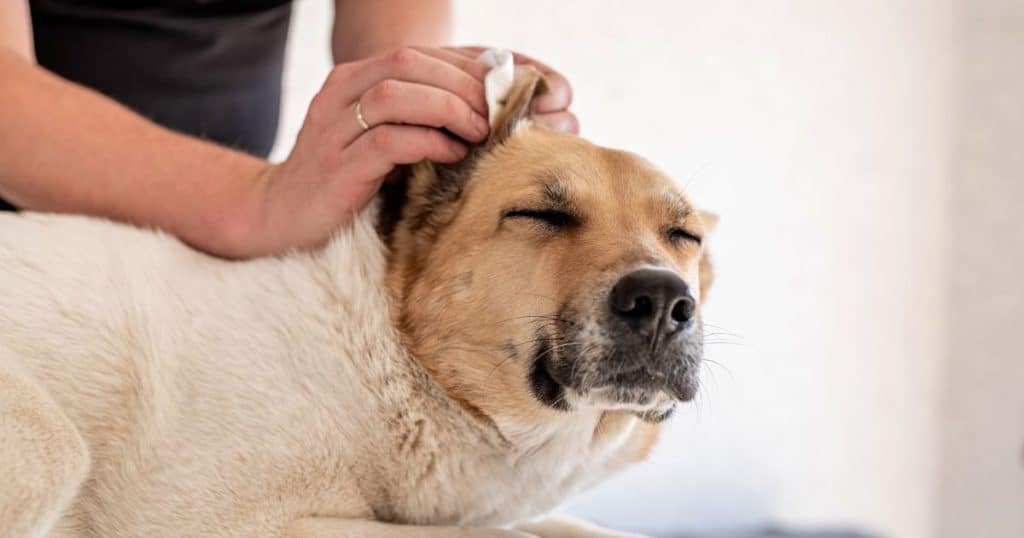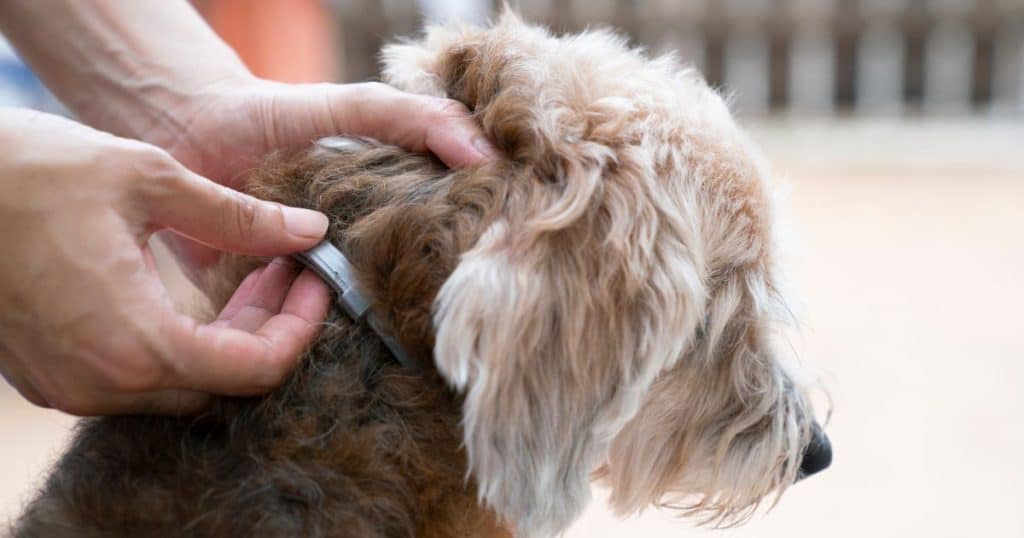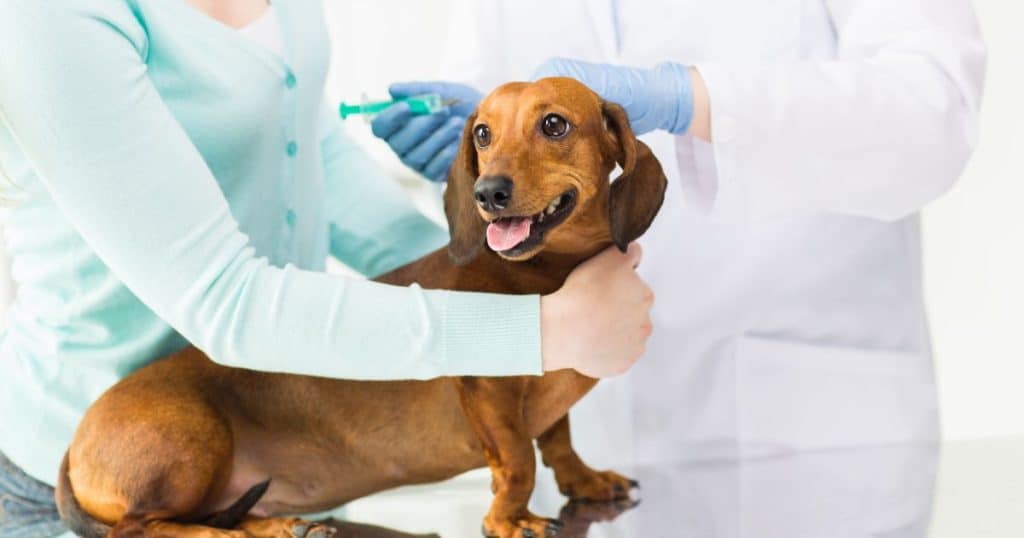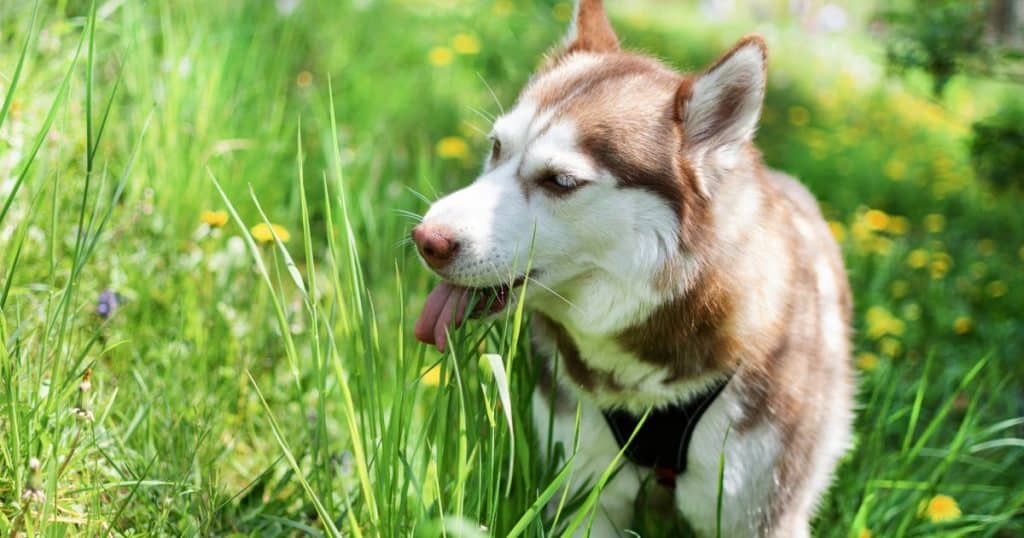Table of Contents
Many dog owners have experienced the panic that comes with watching their furry friend chomp down on a buzzing bee. While some dogs may just be curious about the insect, others may have an allergic reaction to the sting.
But are dogs actually allergic to bees? The short answer is yes, dogs can be allergic to bee stings, just like humans. However, not all dogs will have an allergic reaction, and the severity of the reaction can vary greatly from dog to dog.
In this article, we will explore the topic of dog and bee allergies in more detail. We will discuss the symptoms of a bee sting allergy in dogs, what to do if your dog is stung by a bee, and how to prevent your dog from getting stung in the first place.
What Happens When a Dog Gets Stung by a Bee?

When a dog gets stung by a bee, it can be a painful and uncomfortable experience. The severity of the dog’s reaction to the bee sting can vary depending on the dog’s size, age, and overall health. In most cases, a single bee sting will produce pain, swelling, redness, and inflammation around the sting site.
If your dog is stung by a bee, the first thing you should do is carefully remove the stinger with tweezers. Be sure to avoid squeezing the stinger, as this can release more venom into your dog’s skin. Once the stinger is removed, you can apply a paste of baking soda and water to help neutralize the venom and reduce swelling. You can also apply a cold compress to the sting site to help reduce pain and inflammation.
It’s important to monitor your dog closely after they have been stung by a bee. If your dog shows signs of an allergic reaction, such as facial swelling, difficulty breathing, hives, or swelling of the mouth or throat, seek veterinary care right away. These are signs of a severe allergic reaction and can progress quickly. In some cases, dogs may even experience anaphylactic shock, which can be life-threatening if not treated immediately.
Aside from anaphylaxis in dogs allergic to bees, the biggest risk for pets and bees is enduring multiple stings. With the spread of the more aggressive Africanized bee species, it takes little provocation from a curious dog to result in hundreds or even thousands of stings, which can overwhelm even the sturdiest of dogs. Therefore, it’s important to keep a close eye on your dog when they are outside and to keep them away from areas where bees may be present.
Are Dogs Allergic to Bees Stings?

Yes, dogs can be allergic to bee stings. Just like humans, dogs can develop an allergic reaction to bee venom. However, not all dogs will be allergic to bees, and some may only experience mild symptoms.
Symptoms of an allergic reaction in dogs
When a dog is stung by a bee, it is normal for the area to swell and become painful. However, if a dog is allergic to bee venom, it may experience more severe symptoms. According to AKC, signs of an allergic reaction in dogs can include:
- Facial swelling
- Difficulty breathing
- Hives
- Swelling of the mouth or throat
- Lethargy
- Vomiting
- Diarrhea
- Collapse
If a dog experiences any of these symptoms after being stung by a bee, it is important to seek veterinary care immediately.
Risk factors for an allergic reaction in dogs
While any dog can develop an allergy to bee venom, some dogs may be at a higher risk. Dogs that have previously been stung by bees or have a history of allergic reactions may be more likely to have a severe reaction. Additionally, dogs that spend a lot of time outdoors or in areas where bees are present may be at a higher risk of being stung.
It is important for dog owners to be aware of the signs of an allergic reaction and to seek prompt veterinary care if their dog experiences any of these symptoms after being stung by a bee.
What to Do if a Dog Gets Stung by a Bee

Even though most dogs will not have an allergic reaction to a bee sting, it can still be painful and uncomfortable. Here are some steps to take if your dog gets stung by a bee:
First Aid for a Bee Sting
If your dog gets stung by a bee, the first thing to do is to remove the stinger. You can use a pair of tweezers or scrape it out with a credit card. Be careful not to squeeze the stinger as it can release more venom into the wound.
After removing the stinger, you can apply a paste made of baking soda and water to the sting site. This can help reduce swelling and relieve pain. You can also apply an ice pack wrapped in a towel to the area for 10-15 minutes at a time to help reduce swelling and discomfort.
If your dog is in pain or discomfort, you can give them an over-the-counter pain reliever like acetaminophen or ibuprofen. However, you should always consult with your veterinarian before giving your dog any medication.
When to Seek Veterinary Care
If your dog is having an allergic reaction to the bee sting, it is important to seek veterinary care immediately. Signs of an allergic reaction include:
- Hives or swelling
- Difficulty breathing
- Vomiting or diarrhea
- Weakness or collapse
If you notice any of these symptoms, take your dog to the nearest veterinary hospital or emergency clinic right away. Your veterinarian may administer medications like antihistamines, steroids, or epinephrine to help reduce the allergic reaction.
It is also important to seek veterinary care if your dog is stung multiple times or if the sting is located in a sensitive area like the mouth or throat. In some cases, the swelling can be severe enough to cause breathing difficulties, and your dog may need to be hospitalized for observation and treatment.
Preventing Bee Stings in Dogs

Avoiding Areas with Bees
One of the easiest ways to prevent bee stings in dogs is to avoid areas where bees are present. This can include areas with flowering plants, gardens, and orchards. If you know that your dog is allergic to bees, you should be especially vigilant about avoiding areas where bees are present.
Using Protective Gear
If you can’t avoid areas with bees, you may want to consider using protective gear for your dog. This can include a beekeeper’s suit or a specially designed dog jacket that covers the dog’s body and legs. These types of protective gear can help prevent bee stings and reduce the severity of any stings that do occur.
Training Your Dog to Avoid Bees
Training your dog to avoid bees can be a helpful way to prevent bee stings. One way to do this is to teach your dog to “leave it” when he encounters a bee. You can also train your dog to stay away from areas where bees are present, such as gardens or flower beds. If your dog has a history of eating bees, you may want to work with a professional dog trainer to address this behavior.
Overall, preventing bee stings in dogs requires a combination of vigilance, protective gear, and training. By taking these steps, you can help keep your dog safe and healthy, even in areas where bees are present.
Before You Go
While it is possible for dogs to be allergic to bees, it is not a common occurrence. It is important to be aware of the signs and symptoms of an allergic reaction in dogs, including itching, redness, swelling, and difficulty breathing. If your dog is stung by a bee and displays any of these symptoms, it is important to seek veterinary care immediately.
Prevention is key when it comes to bee stings in dogs. Keeping your dog away from areas where bees are present, such as flowering plants or beehives, can help reduce the risk of a sting. Additionally, if you know that your dog is allergic to bees, it is important to carry an epinephrine auto-injector with you at all times.
It is important to note that not all dogs will have an allergic reaction to a bee sting. However, even if your dog has not had a reaction in the past, it is still important to monitor them closely if they are stung. Multiple stings or stings in sensitive areas, such as the mouth or throat, can still be dangerous.
If you suspect that your dog may be allergic to bees, it is important to speak with your veterinarian. They can perform tests to determine if your dog has an allergy and provide you with information on how to manage it.




Leave a Reply
You must be logged in to post a comment.